How to achieve good seed-soil contact when planting a pasture
There are several steps involved in planting a new pasture and it is important to know what equipment is needed and when. This article focuses on one aspect of planting – getting good seed-soil contact – why it is important and how to do it.
The steps used to plant pastures are the same as those used to plant forage or grain crops:
- Fallow – kill existing grass or vegetation with chemical or mechanical methods to enable storage of moisture in the soil profile and help control the weed population.
- Prepare the seed bed – ensure there is a fine but firm seed bed for good seed-soil contact.
- Plant – when there is moisture in the soil (down to 50cm or greater) and a high chance of rain for germination and continued growth.
When preparing the seed bed, there are lots of factors to consider. What should the soil surface look and feel like? Where in the seed bed should seed be placed? What machinery or implements can be used to maximise successful germination?
In this video, DPI Pasture Agronomist Stuart Buck summarises how a flange or ring roller can be used to achieve good seed-soil contact on two different soil types (5 min 30 sec).
Pasture seeds can be tiny!
Seeds of many pasture grass and legume plants are VERY small – roughly 1-3mm long. Small seeded pasture plants include: all grasses, stylos, desmanthus, siratro. Small seeds have less stored energy, which means they won’t successfully emerge if planted too deep. They should be planted at a maximum depth of 10mm, otherwise the baby leaves will never emerge above ground and the germinating plant will die. Alternatively, seeds can be placed on top of the soil and pressed into the soil surface, so they are partially covered.
Some varieties of pasture legumes, such as butterfly pea and leucaena, have larger seeds so can be planted deeper (around 25mm).
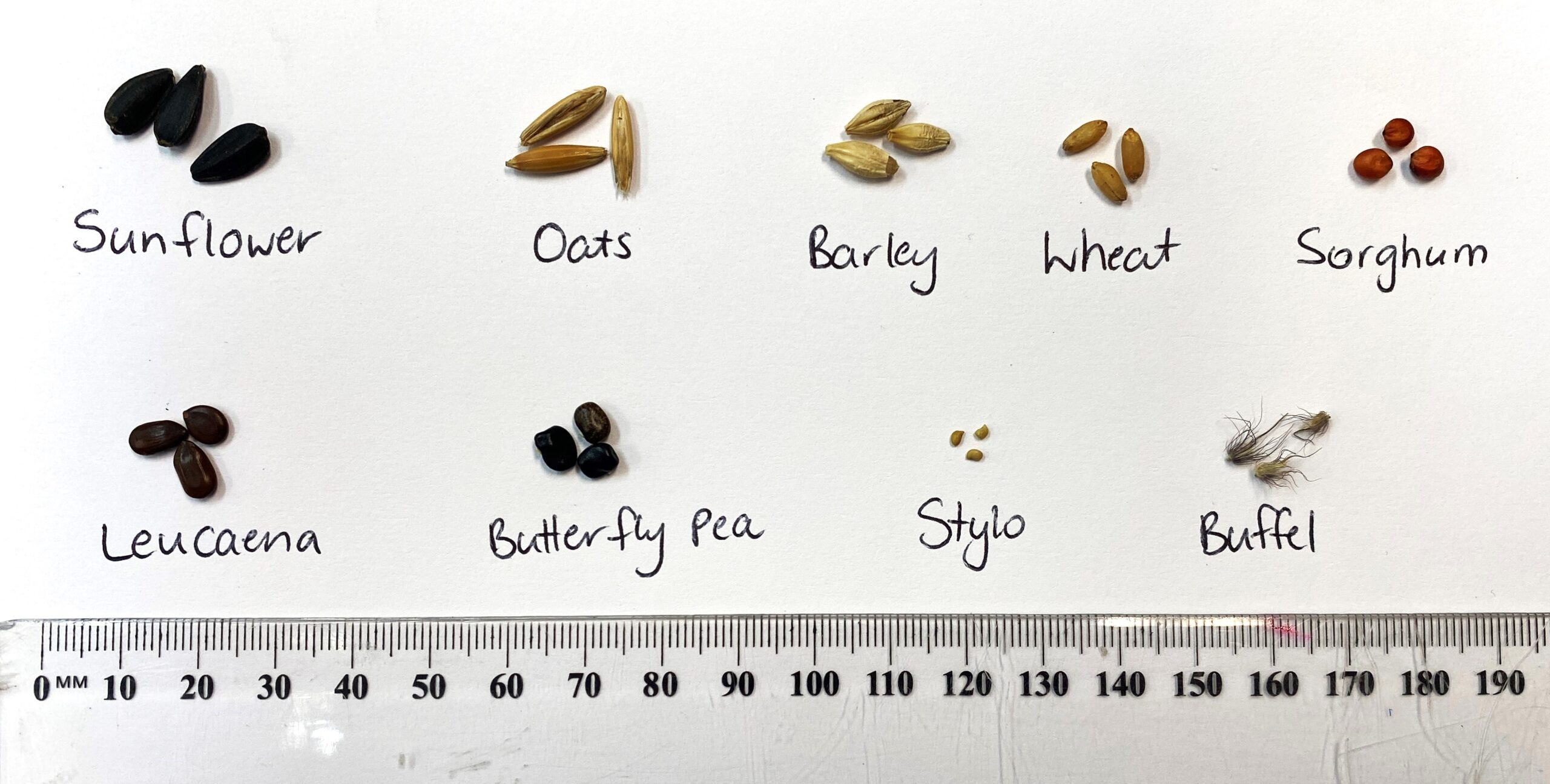
Seed-soil contact is critical for germination
Seeds of any size need to have good contact with the soil for water transfer to start germination. Seeds need to get wet to imbibe – which is the process of absorbing water from the surrounding soil into the seed to induce germination. In the case of small seeds, it is very important that contact with the soil is as even and firm around the seed as possible, so the seed has the best chance of taking on that moisture. Loose, fluffy soils have too much air between the particles and the seed, which results in low seed-soil contact and poor moisture transfer to the seed. However, obtaining even and firm contact between tiny seeds and the soil can be difficult to achieve on some soil types and with limited machinery.
The optimal seed bed
Generally, paddocks are initially prepared for planting with large primary tillage implements like chisel ploughs, offset discs, rippers etc. These preparations leave the soil surface cloddy, uneven and fluffy and do not produce a suitable seedbed to plant small pasture seed into. Often, another pass with a secondary tillage implement, such as scarifier or cultivator, is needed to reduce the size of the clods and make the soil surface flatter and more crumbly. Depending on the soil type and the amount of rain received, multiple cultivations maybe needed to produce a fine and firm seedbed suitable for pasture seeds.
Fine refers to the size of soil particles. The aim is to have a flat, friable surface without large clods, rills, furrows or other lumps and bumps! However, a soil that is powdery is too fine and will cause surface sealing after rain.
Firm refers to the degree of surface compaction. The soil should be firm but not crusted or sealed off. If deep depressions are left by walking across the surface, then the soil is too fluffy and soft for adequate seed-soil contact.
Taking care to prepare the seed bed well, greatly increases the chance of small pasture seeds germinating.
Implements used to achieve good seed-soil contact
Cultivation equipment such as offset disc, chisel ploughs, scarifiers etc can produce a fine seedbed but sometimes these don’t create a firm enough seed bed for reliable seed germination. Cultivated soils can be firmed up through rainfall, where soil particles stick together with moisture and air pockets are expelled. Another way to firm up soil is by using a roller. Rollers are tow-behind implements that gently compact soil under their weight. They are particularly useful – some might say critical – if the method of planting is broadcasting seeds on the soil surface, especially on soils that are not prone to severe crusting. Rolling the soil before planting can ensure an even and firm soil surface. Seed can then be broadcast on top of the soil via aeroplane, fertiliser spreader, drum seeder or planter. Rolling after planting will gently press the seed into the top of the soil, ensuring good seed-soil contact. Rolling can sometimes be a slow process, depending on the size of the roller and tractor pulling it, and how rough the soil surface is. Many rollers can be hooked up in ‘gangs’ where several rollers are pulled together over a wider area.
There are many types of rollers, common types are rubber tyre, flat drum, or flange/ring rollers.
- Rubber tyre rollers utilise multiple rubber tyres grouped together on a common axle and are towed behind a tractor, ute, or even an ATV. They are cheap to buy (or make), and depending on weight, can do a good job at firming up the seedbed.
- Flat drum rollers are generally made from a flat steel drum and are towed by a tractor. These are heavier than rubber tyre rollers and can leave a flat soil surface which can be prone to sealing on dispersive soil types.
- Flange or ring rollers are made with multiple steel flanges or rings on a common axle. These produce a rilled soil surface similar to a corrugated iron roof. These have multiple advantages over the other roller types. They can effectively break up moderate surface crusts to provide friability, and they can gently firm up fluffy soils. The rills created can help to minimise crusting on dispersive soils, but also hold moisture once rain falls.
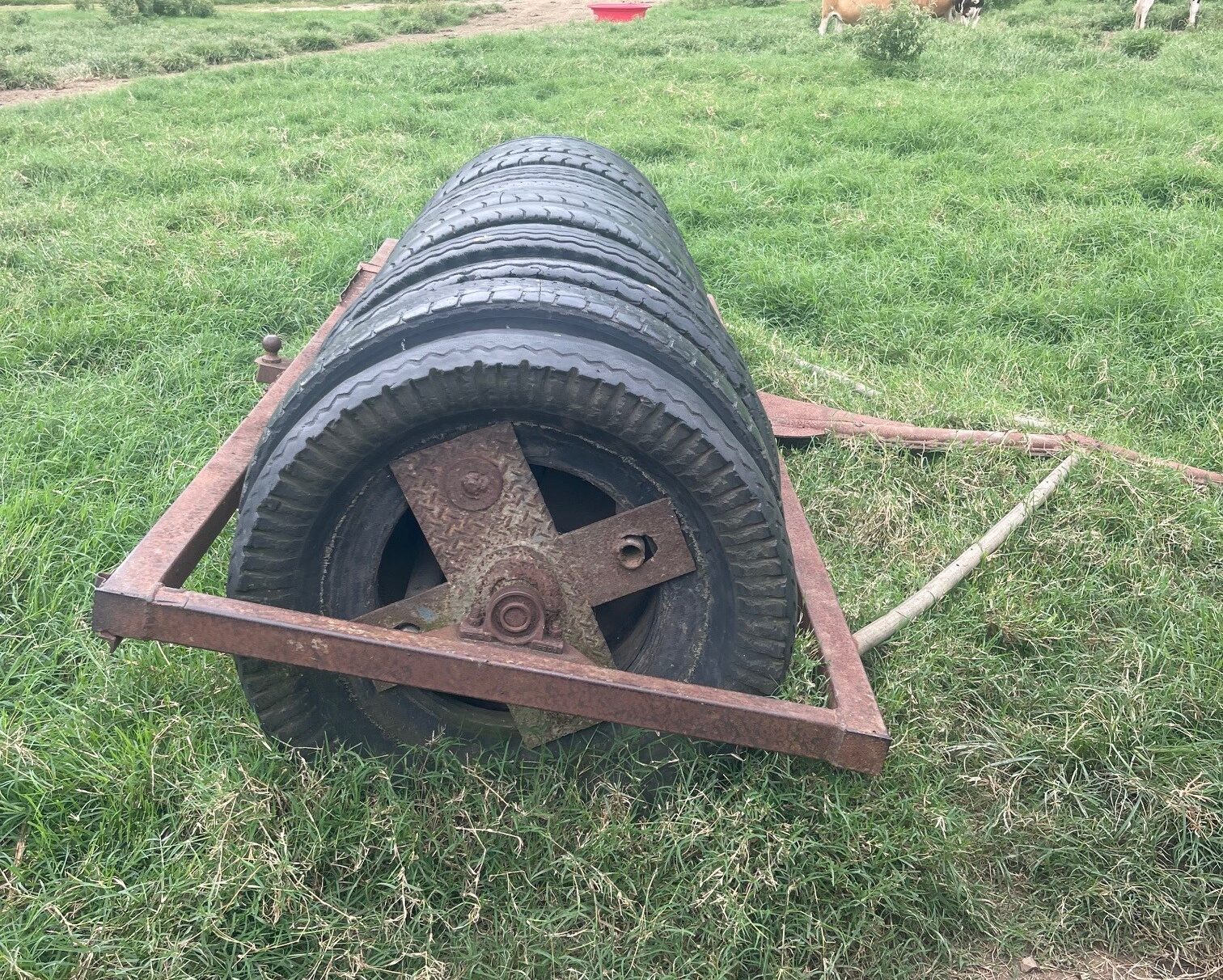
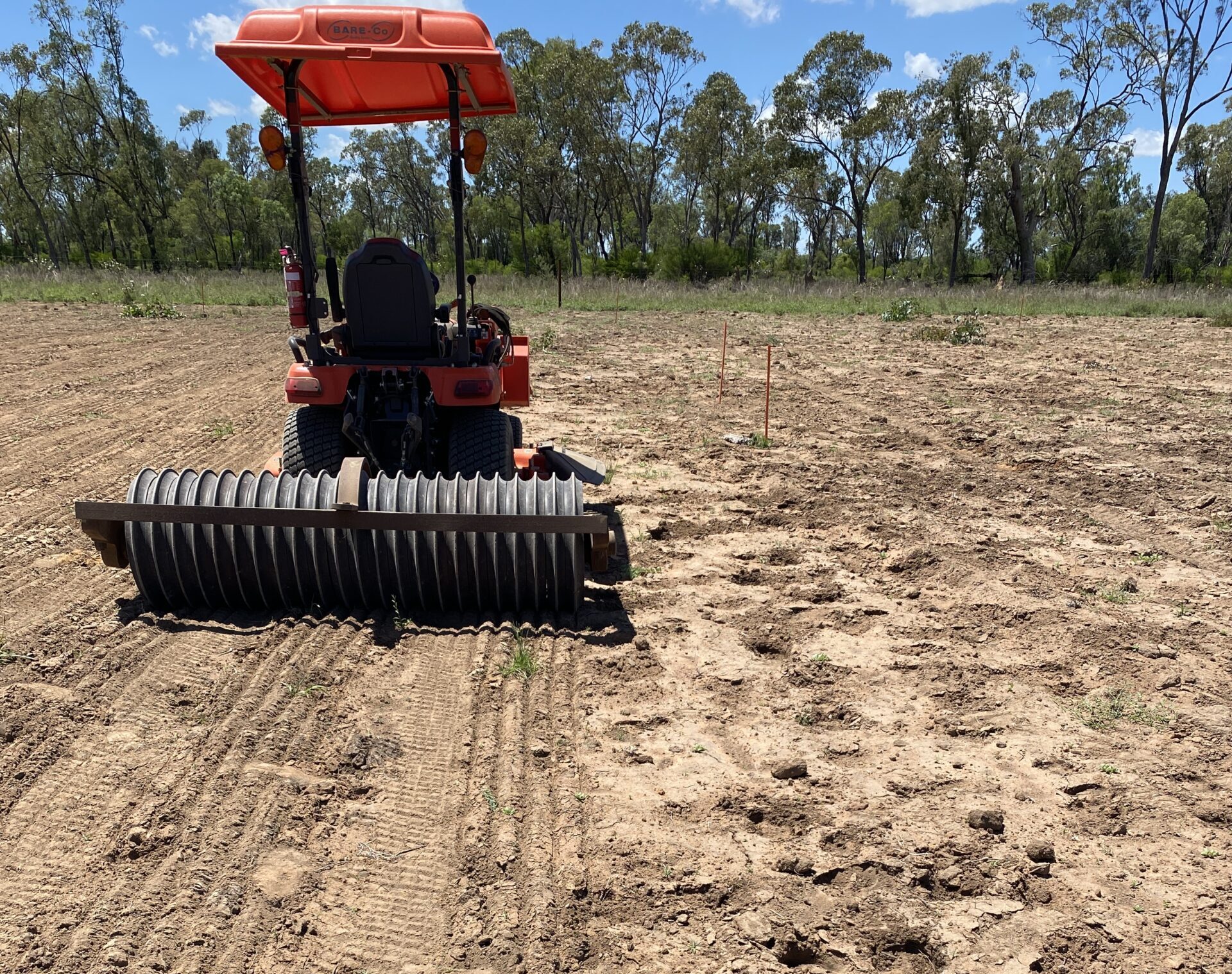
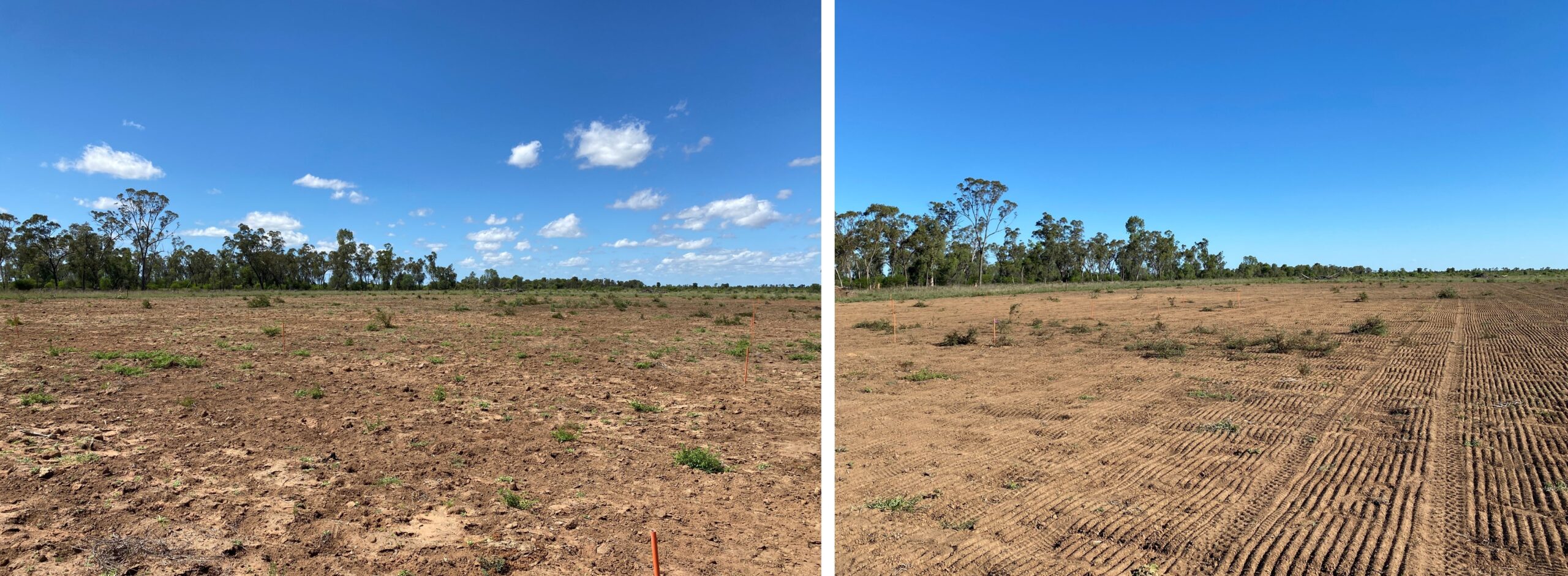
Right: Same paddock but after rolling with a flange roller. The soil surface is much more even with very few large clods and the crusted areas are gone.
Other implements such as harrows, chain, mesh or heavy bars can be used to firm up a seedbed, but generally they do more to reduce cloddiness and improve friability. These can be useful if a roller cannot be obtained, or if the soil is highly dispersive and prone to severe crusting.
While all of these implements have a place, the best way to obtain good seed-soil contact is with a precision planter with press-wheels. These are the ultimate machines due to very accurate seed metering, placement and depth, and have press-wheels that carefully compact the soil around the seed for optimal seed-soil contact. While a precision planter is the best piece of equipment to plant a new pasture, they are not always suitable depending on the situation. Excellent results can still be achieved using a flange roller and something to broadcast seed on top of the soil.
Example: flange rollers – versatility across soil and fallow types for pre- and post-planting
For many of the DPI pasture field trials sown in the last 10 years in central Queensland, a flange roller was used before and after planting. The versatility across soil types and ease of use makes the flange roller an essential piece of equipment when seeding by broadcasting the seed on top of the soil.
Pre-planting: soft fluffy soil
Soil that has been mechanically cultivated through many tillage operations will generally result in a seedbed that is fine, fluffy and dry on top. If seeds are broadcast into this situation, they will end up being buried deep when rain falls and compacts the top layer of soil. Rolling before planting will push the air out of the fluffy top layer of soil resulting in a firm seedbed to plant into and more even water distribution through the topsoil when germinating rain occurs.
As a rule of thumb: if deep footprints are produced when walking across soft fluffy soil, it is not firm enough to plant into.
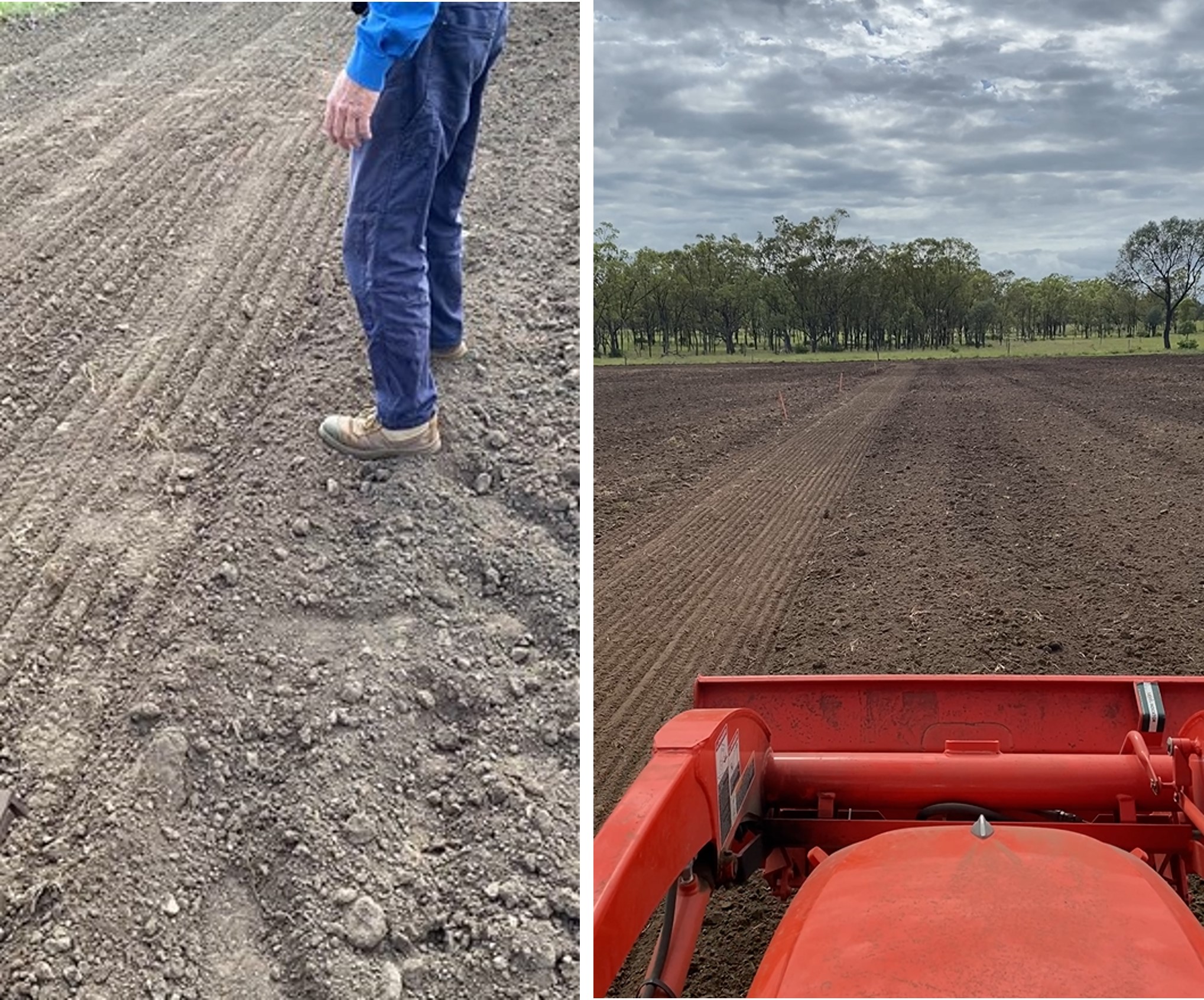
Pre-planting: hard setting soil
Soil that sets hard after rain is too firm to plant into. Tiny seeds sitting on top of hard crusted soil only have contact with the soil on the underside. This significantly reduces the ability of the seed to imbibe moisture and the germinating root will struggle to penetrate a tight crust. Prior to planting a light cultivation can be used to break-up the crust, however rolling may also achieve a loose, friable topsoil where higher seed-soil contact can occur.
As a rule of thumb: if seed bounces when it hits the ground, the soil is too firm.
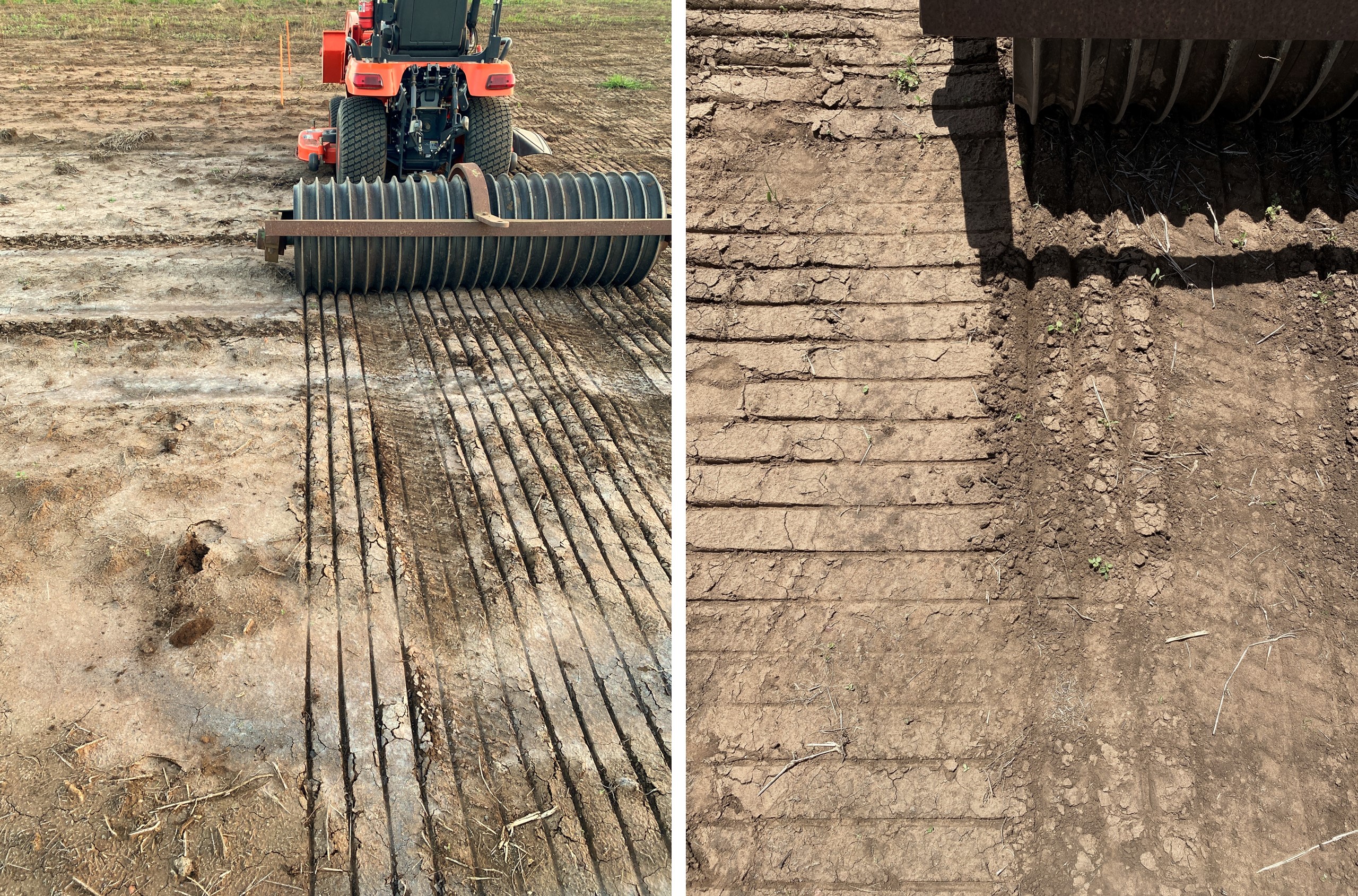
Right: Photo taken after a second pass with a flange roller showing the first rolling on the left, and the second rolling on the right behind the tractor. Note the finer texture of the soil with the crust broken into smaller pieces.
Pre-planting: soil with mulch cover
When a fallow has been maintained with herbicides, there is often a mulch layer of dead grass on the soil surface. Whilst this is good to help store moisture by increasing infiltration, seeds can get caught in the mulch layer and will not make contact with the soil, especially if the mulch layer is thick. Rolling before and after planting can help break up the mulch and press the seed onto the soil.
Rule of thumb: if the soil can’t be seen through the mulch layer, the seed will struggle to reach the soil soon after planting.
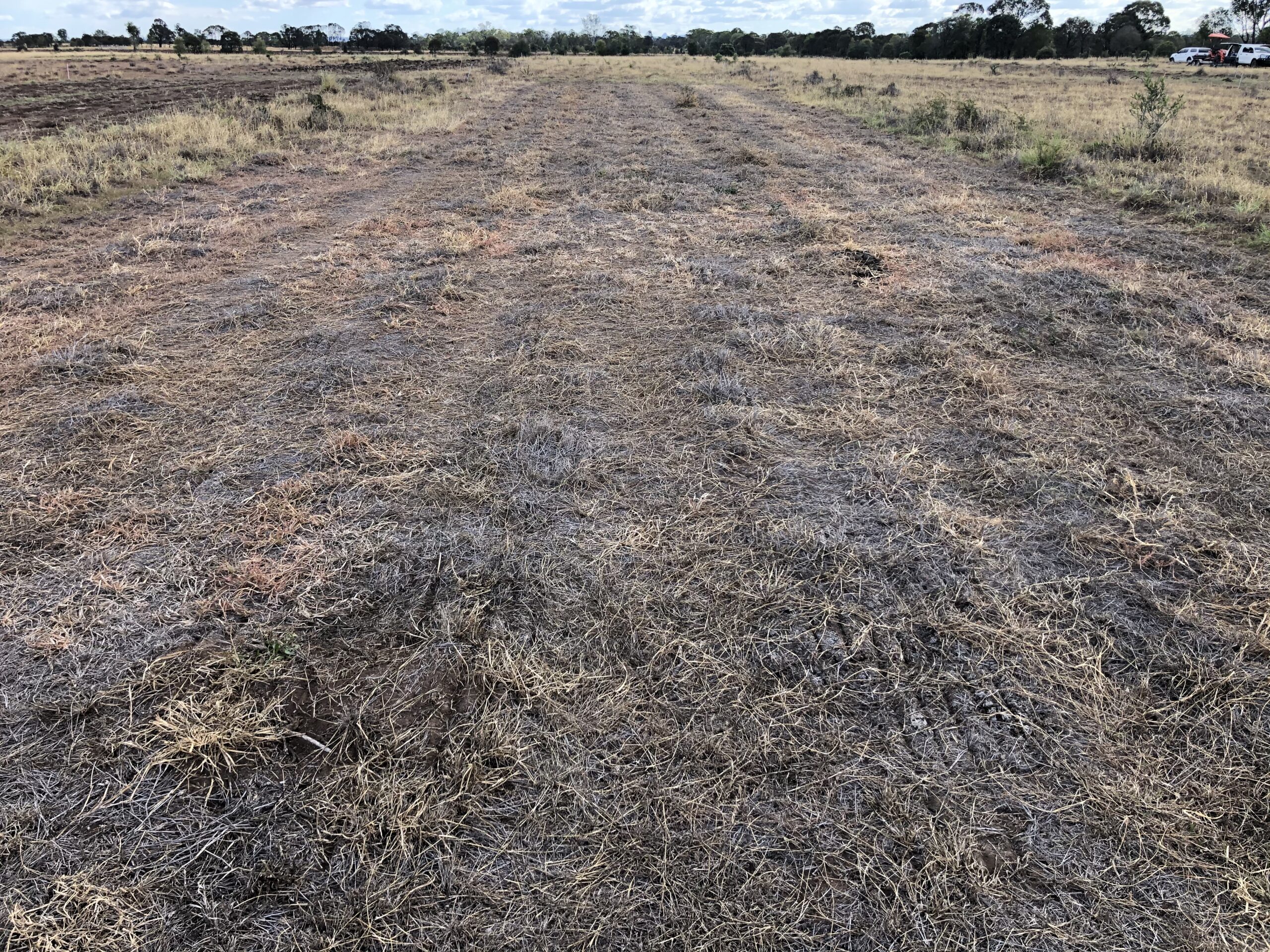
Post-planting: good seed-soil contact
After broadcasting seed on top of the soil, rolling presses the seed into the soil for good seed-soil contact. After rolling, some seed should be seen on the surface otherwise it has been buried too deep.
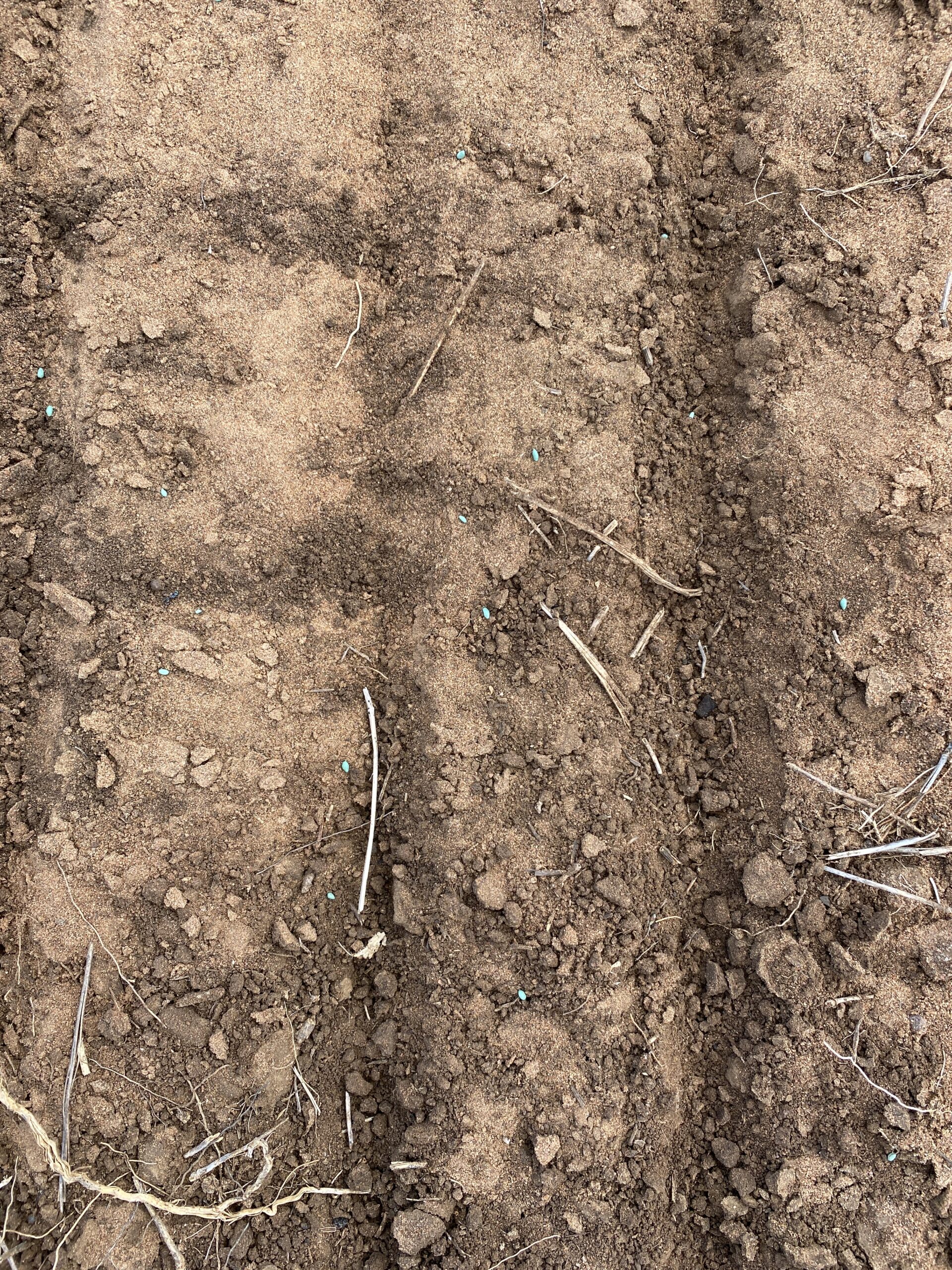
This article is produced by the Queensland Pasture Resilience Program, a partnership between the Department of Primary Industries, Meat & Livestock Australia, and the Australian Government through the MLA Donor Company.